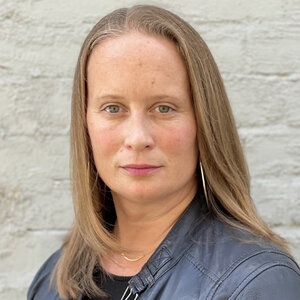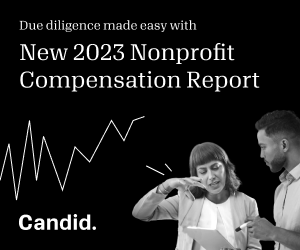Activating ‘equity intermediaries’: Make tangible progress to advance diversity, equity, and inclusion

At a moment when investment in equity in the workplace has dramatically slowed, and diversity, equity, and inclusion (DEI) has again become a “nice to have” instead of a necessity, tangible progress on inclusion could not be more urgent. The evidence overwhelmingly shows that U.S. institutions systematically punish the people they exclude. And while it may be uncomfortable to admit, the exclusionary dynamics at work in the nonprofit and philanthropy sectors often mirror those found in many for-profit companies. Data show that 90 percent of nonprofit executives are white and that philanthropic funding mostly comes from wealthy white men who inherited money and power. This leads to hiring practices that perpetuate inequitable power dynamics, leave non-white leaders at a systemic disadvantage, and result in BIPOC-led organizations being chronically underfunded.
We shouldn’t expect underrepresented people to enter white spaces—specifically nonprofit and foundation leadership suites—that are likely to traumatize them, even though many have already taken on that burden. As white and other dominant-culture staff members work to encourage evolution from within nonprofit organizations, how can we also ensure that marginalized people joining these institutions are not harmed by oppressive cultural norms? For those of us working at nonprofits but not in positions of leadership, how might we catalyze progress to propel these systems toward greater equity and inclusion?
My intent is not to minimize the importance of advocates from marginalized communities speaking out for their rights and social justice but to examine the role that internal advocates who benefit from dominant-culture privilege can play in transforming norms and practices.
Existing research shows the importance of a strategic approach to shifting organizational culture around DEI, but it’s often difficult to build roadmaps toward sustainable change when white leadership resists challenges to the status quo. While executive-level buy-in to DEI goals is undeniably important, anyone can contribute regardless of their seniority or decision-making power. In an organization with mostly, or all, white leadership, dominant-culture staff members at all levels have a key role to play as “equity intermediaries.”
The term “equity intermediary” recalls the role that intermediary organizations can play in providing funding and capacity-building support to smaller institutions, serving as a bridge between large foundations and community-based organizations. Similarly, internal advocates can help shift resources and power to people who have historically been excluded from decision making and leadership. Equity intermediaries at all levels of seniority can advance a holistic approach to inclusion, redistributing access within institutions, and reducing the barriers faced by junior staff and those from marginalized communities.
Action steps for junior staff
1. Begin with yourself. All too often our experience lags behind our intentions, and all of us can benefit from deeper investment in our own equity mindset. Whether it’s intentionally using more inclusive language or following new accounts on social media that elevate diverse voices, cultivating self-awareness is a foundational step in the DEI journey.
2. Find allies and accomplices. There are many structured ways to find others on your team who share your priorities. Start a reading group or an opt-in affinity group program that meets weekly over lunch. Or include a pre-reading component once a month at all-staff or department meetings and dedicate at least 30 minutes to discussing articles that can help improve your organization’s current practices.
3. Locate levers of inclusion in your job description. Regardless of your area of focus at work, there are ways you can move your organization forward. For example, if you create social media posts, regularly share content from accounts featuring underrepresented voices. If you work in contracting or operations, ensure that at least one bid for every job is sourced from a firm with diverse leadership.
4. Advocate for inclusive hiring practices. Speak with your manager or HR department to include junior staff on hiring committees. Emphasize the effectiveness of “culture add” rather than “culture fit” when it comes to candidate selection.
5. Request external facilitation of team retreats and strategy sessions and nominate groups that bring a DEI lens to their work. Strategically activating this kind of external pressure can complement your internal work to advance equity.
6. Help leadership make the connection between DEI and team performance. There is abundant data available now showing that diverse teams perform better. Communicate the benefits of DEI using the language of ROI and team effectiveness to managers who haven’t yet bought into the importance of inclusion for its own sake.
7. Speak up when others are silent, even when it feels vulnerable or scary. Leverage the privilege you hold, whether as a white person, English speaker, able-bodied individual, or otherwise, to advocate for inclusive practices.
Action steps for mid-level and senior staff
1. Promote the evolution of white staff and board members’ critical consciousness. To help identify and address barriers to operationalizing an equity agenda and set you up for long-term success, create affinity spaces for both staff and supporters, make equity and inclusion training mandatory for all staff, and hold externally facilitated board retreats focused on DEI.
2. Build organizational structures that prioritize equity and inclusion and ensure that people of color on your team are not the only staff members tasked with promoting DEI efforts. Attention to both detail and structure is important: Incorporate equity and inclusion-related tasks into each job description, hire dedicated outreach staff who represent the communities you serve, and revise your team structure to actively combat barriers to access.
3. Create systems to solicit confidential and anonymous staff feedback. Encourage full staff participation in planning and evaluation processes. Listen actively, particularly when you receive feedback you don’t like or didn’t expect.
4. Make sure your team members’ vision and values align with your goals. Respectfully transition staff who are not enthusiastically invested in equity and inclusion out of the organization.
5. Adapt HR practices with diversity in mind. Emphasize your approach to DEI in hiring announcements, be transparent about salary ranges for specific roles, promote your organization with diverse professional networks, and conduct individual outreach to strong candidates who represent underserved communities.
6. Recruit and promote staff who represent a spectrum of underrepresented identities and experiences. An intersectional approach to equity and inclusion ensures that you are not focused on a particular dimension of diversity to the exclusion of other essential points of view. Consider race, sexuality, gender identity, disability, and the spectrum of marginalized identities when building an intersectional and complementary team.
7. Embrace succession planning and create a roadmap to replace yourself with someone who brings a different background and perspective to your role. If people of privilege don’t give up positions of power, they’re not making room for structural change to take place. In many ways, this last step is the most important one.
After implementing these changes, equitable nonprofit and philanthropic organizations should be able to include at least 50 percent representation of staff from marginalized communities, including C-suite and executive-level staff roles and board membership. Ultimately, diversity should be an outcome of equity and inclusion work, rather than a first step. Over time an equitable approach encourages the active participation and leadership of people with diverse identities and perspectives.
As equity intermediaries promote the sustained shift to a more deliberate approach to diversity, equity, and inclusion, they can use these action steps and accountability practices to ensure that their organizations center the needs and perspectives of marginalized staff and community members. Investment in accountability and transparency for staff and the people we serve will contribute to accelerating the transformation of oppressive systems—in the nonprofit sector and beyond—into inclusive communities.
Emily Teitsworth is executive director of the Honnold Foundation, which partners with marginalized communities around the world to advance equitable access to solar energy.








To close the racial wealth gap, look beyond education and into our communities